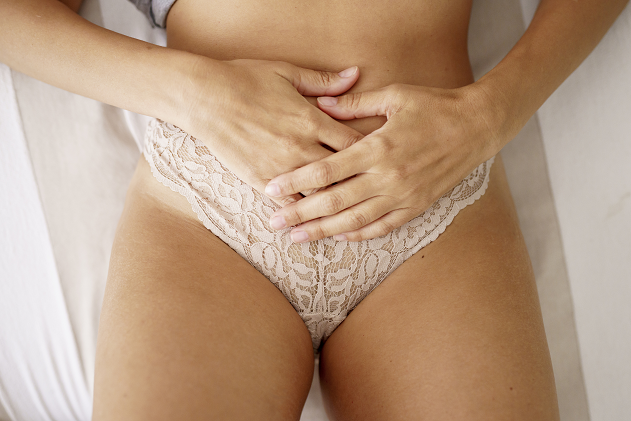Clitoral Adhesions: Understanding, Causes, Treatment, and Prevention

Clitoral adhesions are a relatively uncommon but serious condition affecting women’s genital health. The term refers to a situation where the clitoral glans (the external part of the clitoris) becomes abnormally attached or fused to the surrounding tissues, often the clitoral hood. This condition can be uncomfortable and, in some cases, can affect sexual function and general well-being.
Though clitoral adhesions are not widely discussed, their impact on a woman’s quality of life can be profound. This article aims to provide an in-depth understanding of clitoral adhesions, including their causes, symptoms, diagnosis, treatment options, and prevention.
What Causes Clitoral Adhesions?
Clitoral adhesions can occur for various reasons, often linked to abnormal skin or tissue growth. Understanding these causes is essential for both prevention and treatment. Here are the most common factors that contribute to the development.
Hormonal Imbalances
Hormonal imbalances, particularly those involving estrogen, can affect the elasticity and health of the skin around the genital area. Estrogen plays a key role in maintaining the health of vaginal tissues and skin, and a deficiency can lead to dryness, thinning of tissues, and adhesions.
- Example: Menopause or surgical menopause (post-hysterectomy) can significantly reduce estrogen levels, increasing the likelihood.
Infections and Inflammation
Chronic infections or inflammation in the genital area can cause scarring or abnormal healing, which may result in adhesions. Conditions such as vulvovaginitis, herpes, or bacterial vaginosis can lead to changes in tissue structure, contributing to adhesions around the clitoris.
Genital Trauma or Surgery
Injury to the clitoris or genital area, including post-surgical scars, can cause tissue to stick together. Procedures such as clitoral hood reduction surgery, circumcision, or other types of genital surgery might lead to adhesions if the healing process is disrupted.
- Example: Women who undergo female genital mutilation (FGM) may develop as a result of surgical procedures that alter the clitoral area.
Lack of Lubrication
Inadequate lubrication during sexual activity or daily living can cause friction and lead to tissue damage and adhesions. This is especially common in post-menopausal women or those with vaginal dryness due to low estrogen levels.
Skin Disorders
Certain skin conditions, such as lichen sclerosus (a chronic skin condition that causes thinning and scarring), can also lead to the formation of adhesions. These conditions affect the skin’s texture and flexibility, leading to abnormal healing and the development of adhesions.
Symptoms of Clitoral Adhesions

The symptoms of clitoral adhesions can vary depending on the severity of the condition. In some cases, women may not experience significant discomfort, while in others, the adhesions can cause pain and sexual dysfunction. Here are the most common symptoms:
Pain or Discomfort
Clitoral adhesions can cause discomfort, especially during sexual activity or when the clitoris is touched. The may cause the clitoral glans to be pulled or pinched, leading to pain.
Reduced Sensitivity
Women with clitoral adhesions often experience a reduction in clitoral sensitivity due to the fusion of tissues. The clitoral glans may become covered or obscured, making it harder to achieve sexual pleasure.
Difficulty with Sexual Intercourse
Because the adhesions can alter the structure of the clitoral hood and glans, women may find it difficult or uncomfortable to engage in sexual activity. The adhesions may interfere with natural movement during intercourse or genital stimulation.
Swelling or Redness
If there is an underlying infection or inflammation, the area around the clitoris might appear swollen or red. This is often a sign that the adhesions are a result of an ongoing inflammatory process.
Changes in Appearance
In more severe cases, clitoral adhesions can cause a visible change in the appearance of the genital area. This can include the fusion of the clitoral hood to the clitoral glans, making the clitoris appear smaller or less prominent.
Diagnosing Clitoral Adhesions
Diagnosis of clitoral adhesions typically involves a physical examination by a gynecologist or a specialist in women’s health. The healthcare provider will carefully inspect the genital area and assess any visible adhesions or scarring.
Medical History
A comprehensive medical history is essential in identifying potential causes of clitoral adhesions. The doctor may inquire about recent surgeries, infections, hormonal changes, or the presence of any chronic skin conditions like lichen sclerosus.
Pelvic Exam
During a pelvic exam, the doctor will carefully examine the vulva, clitoris, and surrounding tissues for signs of adhesions or scarring. The examination may be accompanied by a gentle palpation of the area to check for discomfort or tenderness.
Laboratory Tests
In some cases, laboratory tests may be ordered to rule out infections, such as a vaginal culture for bacteria or yeast. Additionally, hormone levels may be tested to assess any imbalances contributing to the condition.
Treatment Options for Clitoral Adhesions

Clitoral adhesions can often be treated successfully, especially if detected early. Treatment will depend on the severity of the adhesions and the underlying cause. Below are the most common treatment options:
Topical Steroid Creams
For adhesions caused by inflammation or skin conditions like lichen sclerosus, doctors may prescribe topical steroid creams. These creams can help reduce inflammation, improve tissue elasticity, and prevent further scarring.
Hormonal Therapy
Hormonal therapy, particularly the use of estrogen creams or systemic hormone replacement therapy (HRT), can be effective in treating related to hormonal imbalances. Estrogen helps improve tissue health and prevent further adhesion formation.
Surgical Intervention
In cases where the adhesions are severe or causing significant discomfort, surgical intervention may be required. This could involve a procedure to surgically release the adhesions and restore normal clitoral function.
- Example: A minor surgical procedure to separate the clitoral glans from the surrounding tissues can help alleviate discomfort and restore sexual function.
Dilators and Lubrication
Using vaginal dilators and regular application of lubricants can help maintain the flexibility of the tissue and prevent further adhesion formation. This is particularly helpful in cases of adhesions related to vaginal dryness or post-menopausal changes.
Management of Underlying Conditions
If the adhesions are caused by an underlying condition, such as infection or a skin disorder, treating the condition directly will be essential. This could involve antibiotics, antifungal medications, or other treatments to address the root cause.
Prevention of Clitoral Adhesions

Preventing clitoral adhesions largely involves maintaining good genital health practices and addressing any underlying conditions that could lead to tissue damage or scarring. Here are some preventive measures:
| Prevention Measure | Description |
|---|---|
| Hormonal Therapy | Ensure estrogen levels are balanced to prevent dryness and tissue thinning, especially during menopause. |
| Lubrication | Regularly use a water-based lubricant to reduce friction during sexual activity. |
| Good Hygiene Practices | Keep the genital area clean and dry to prevent infections that can lead to adhesions. |
| Treatment of Skin Disorders | Early treatment of conditions like lichen sclerosus or other skin issues can prevent adhesion formation. |
| Avoiding Trauma | Take care to avoid injury to the clitoral area during sexual activity or other physical activities. |
Frequently Asked Questions (FAQs)
1. Can clitoral adhesions be permanent?
Clitoral adhesions are not necessarily permanent. With early detection and proper treatment, most adhesions can be reversed or managed effectively. However, untreated adhesions may lead to long-term discomfort and reduced sensitivity.
2. Are clitoral adhesions common?
Clitoral adhesions are relatively rare but can occur due to various factors such as hormonal changes, infections, or genital trauma. Women in menopause or those with chronic skin conditions are more prone to this issue.
3. Can clitoral adhesions affect sexual health?
Yes, can affect sexual health by reducing sensitivity, causing pain during sexual activity, and decreasing overall sexual satisfaction.
4. Is surgery the only treatment for clitoral adhesions?
No, surgery is usually a last resort. Most cases of can be managed with topical treatments, hormonal therapy, or lubrication. Surgery is only considered when the adhesions are severe and causing significant problems.
Conclusion
Clitoral adhesions are a relatively rare but potentially disruptive condition that can significantly affect a woman’s sexual health and well-being. Understanding the causes, symptoms, and treatment options is crucial for effective management. With early diagnosis and appropriate care, most women can prevent or resolve restoring normal function and improving quality of life.
By maintaining good genital hygiene, addressing hormonal imbalances, and seeking prompt medical advice when necessary, women can reduce the risk of developing and preserve their sexual health.




